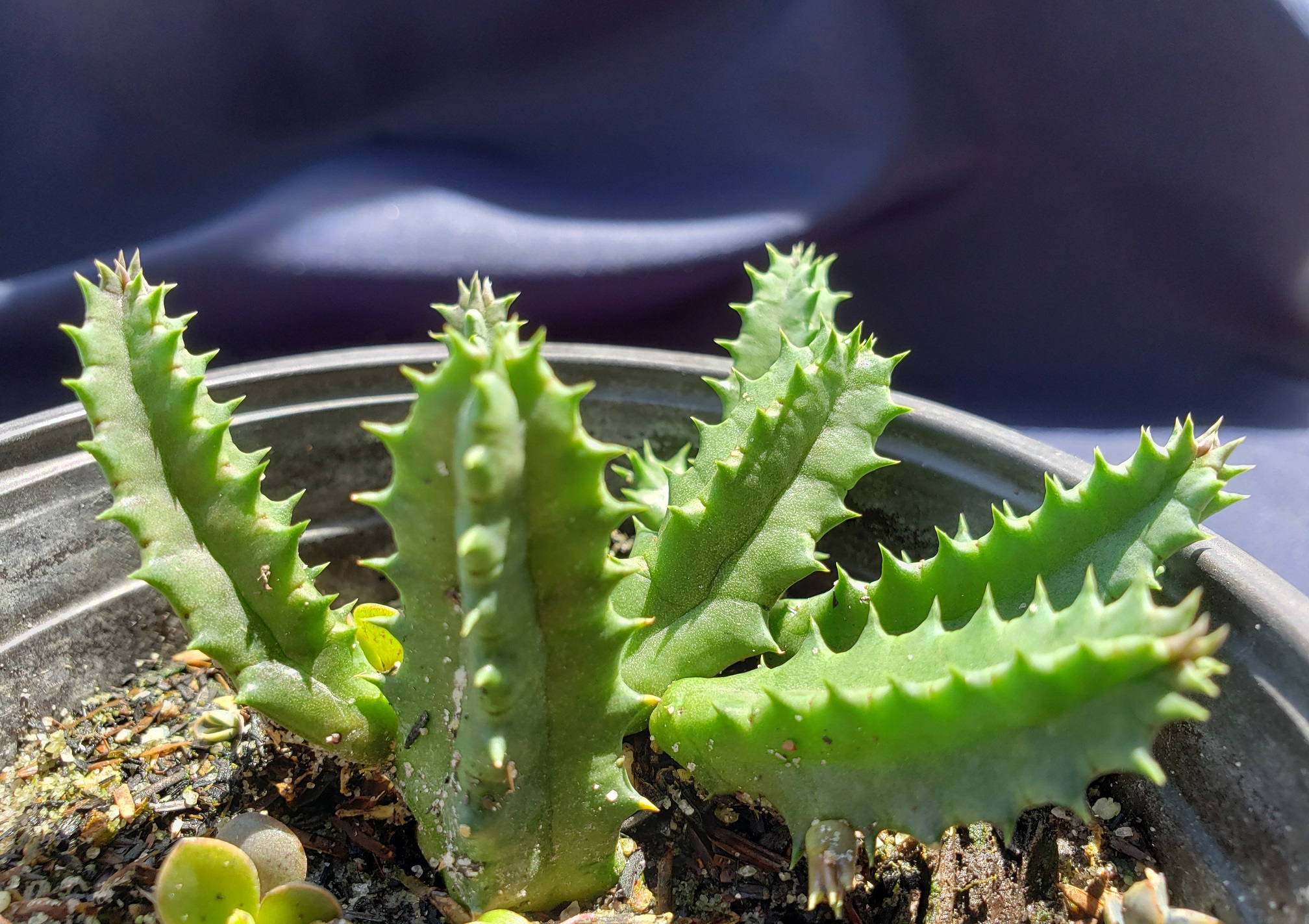Origin and Habitat: Zimbabwe, Mozambique, South Africa (Mpumalanga, KwaZulu-Natal), Swaziland.
Altitudes: It occurs at low altitudes.
Habitat: Open dry land, in stony areas, often in hard loamy soils.
Stems: Deflexed-decumbent or decumbent-erect, laxly branched, tapering, prominently 5-(to 6) angled, and irregularly branching, 5 cm long, 12 mm in diameter and strongly toothed. Teeth 4,5 mm long.
Inflorescence: Few-flowered on a 12-14 mm long peduncle.
Flowers: The corolla is flat (25-)35-45(-50) mm across with a tube c. 6 mm in diameter and c. 7 mm deep, the prominent shiny annulus is glossy red to purple-brown, marked or unmarked, the 5 corolla lobes are acuminate c. 12 x 10 mm, greenish-yellow with red to purple cross-zebra-stripes; both sides glabrous. As with other plants of the genus, H. zebrina has a small intermediate lobe. Sepals 6-8 mm. Corona with inner lobes 2-4 mm tall, claw-like, incurved. Frequently the flowers are larger than the plant itself and emit the smell of carrion. The rotting flesh odour attracts flies who transfer the pollen as they search from flower to flower for the non-existent rotting meat.








Reviews
There are no reviews yet.